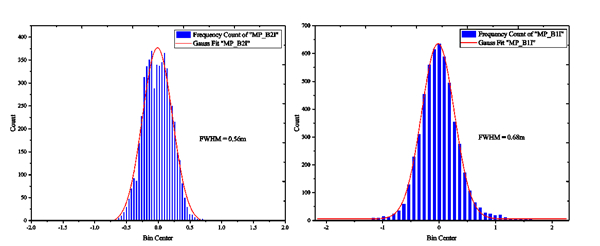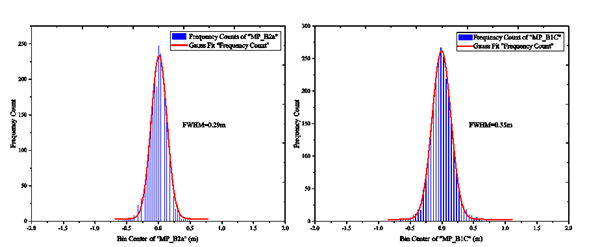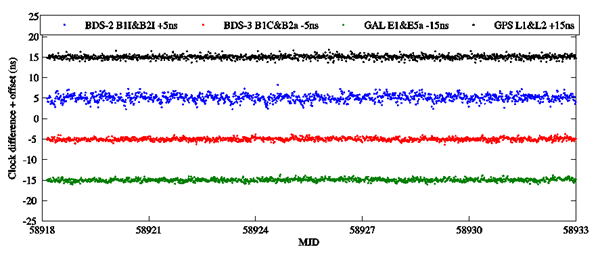Recently, the researchers group from Time Keeping Laboratory, the National Time Service Center of the Chinese Academy of Sciences analyzed the time transfer performance of BDS-3 signals.
Research indicates that the time transfer performance of the BDS-3 satellites is over 50% higher than that of the BDS-2 satellites. In terms of the common view time comparison, the standard deviations of the zero-baseline common clock time comparison of the new BDS-3 signals are comparable to that of GPS and Galileo.
To evaluate the time transfer performance of BDS-3, the pseudorange measurement noise, precision of conventional common view (CV) and all-in-view (AV) time comparison and the instability of the precise point positioning (PPP) time transfer are analyzed in the paper. The results published in Metrologia.
The publication of this paper marks that the National Time Service Center's research has been internationally recognized in the time application field of BDS-3. It also marks that BDS-3's time service capabilities have been recognized by peers in the international time and frequency field. This study has positive meaning to promoting the international application of the Beidou Global Navigation Satellite System.
Since 2009, the National Time Service Center has been carrying out research work on GNSS system time performance evaluation. The group has successively published many papers on top journal (Metrologia) and international conferences (IFCS, EFTF) in time and frequency field, and made technical reports at the ITU, the United Nations International Committee on Global Navigation Satellite Systems (ICG), the International Bureau of Weights and Measures (BIPM), and the Consultative Committee for Time and Frequency (CCTF). The group has done a lot of work on the time application of Beidou, and made positive contributions to promoting the Beidou system to become the official time comparison method for the International Atomic Time (TAI).

Figure 1. Histogram of the code multipath for B1I& B2I in BDS-2 satellites.(Image by NTSC)

Figure 2. Histogram of the code multipath for B1C & B2a in BDS-3 satellites. (Image by NTSC)

Figure 3. Standard deviations of the common clock comparison for different GNSS signals (ns).(Image by NTSC)

Figure 4. CCD results of GNSS CV for different frequency combinations at NTSC stations. (Image by NTSC)
Article link : https://doi.org/10.1088/1681-7575/abbcc1
Contact:
XIONG Tiantian
gjhz@ntsc.ac.cn


